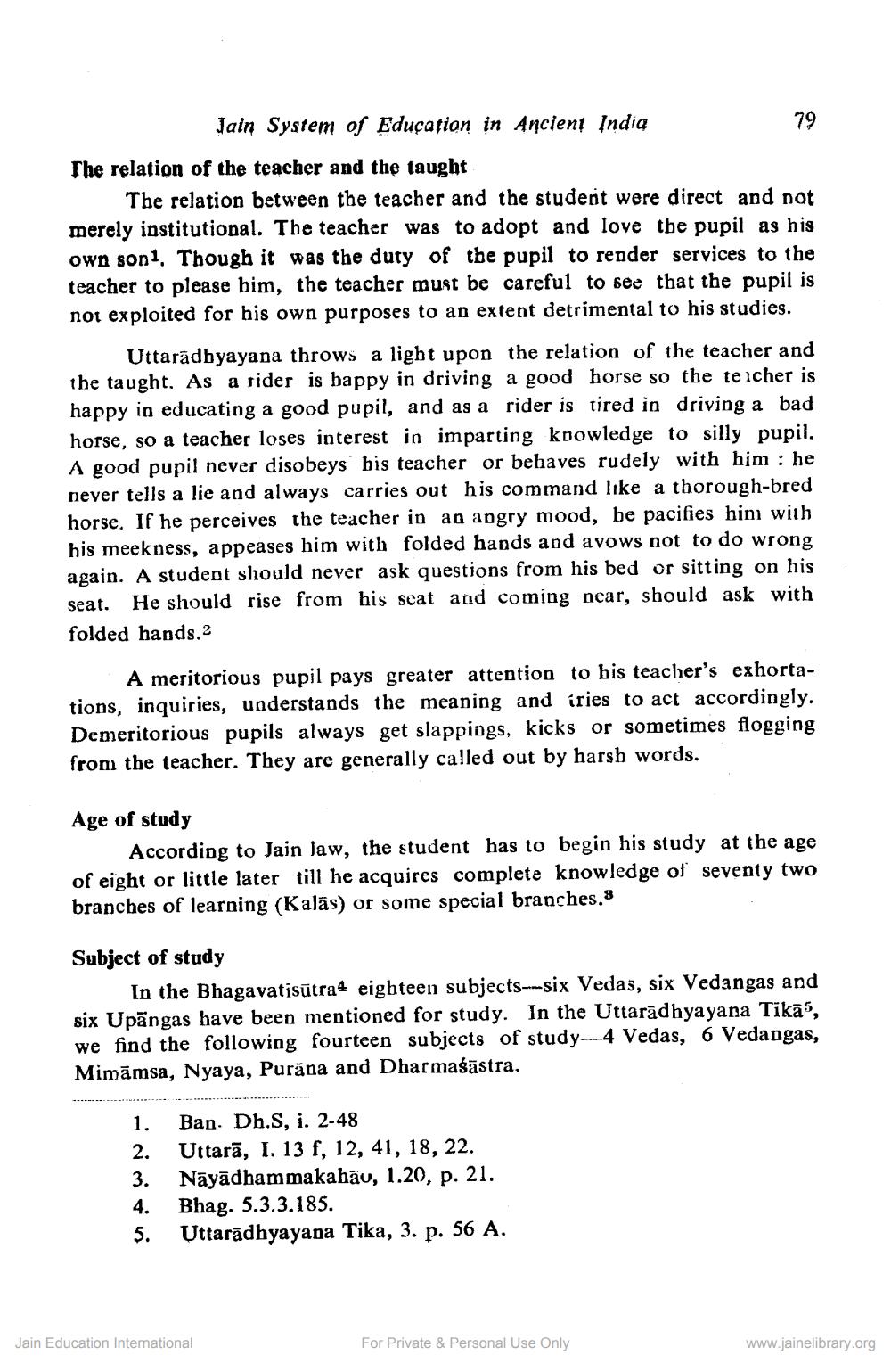________________
Jain System
of Education in Ancient India
The relation of the teacher and the taught
The relation between the teacher and the student were direct and not merely institutional. The teacher was to adopt and love the pupil as his own son1. Though it was the duty of the pupil to render services to the teacher to please him, the teacher must be careful to see that the pupil is not exploited for his own purposes to an extent detrimental to his studies.
Uttaradhyayana throws a light upon the relation of the teacher and the taught. As a sider is bappy in driving a good horse so the teacher is happy in educating a good pupil, and as a rider is tired in driving a bad horse, so a teacher loses interest in imparting kpowledge to silly pupil. A good pupil never disobeys his teacher or behaves rudely with him : he never tells a lie and always carries out his command like a thorough-bred horse. If he perceives the teacher in an angry mood, be pacifies him with his meekness, appeases him with folded hands and avows not to do wrong again. A student should never ask questions from his bed or sitting on his seat. He should rise from his scat and coming near, should ask with folded hands.2
A meritorious pupil pays greater attention to his teacher's exhortations, inquiries, understands the meaning and iries to act accordingly. Demeritorious pupils always get slappings, kicks or sometimes flogging from the teacher. They are generally called out by harsh words.
Age of study
According to Jain law, the student has to begin his study at the age of eight or little later till he acquires complete knowledge of seventy two branches of learning (Kalās) or some special branches.8
Subject of study
In the Bhagavatisūtra4 eighteen subjects--six Vedas, six Vedangas and six Upāngas have been mentioned for study. In the Uttarādhyayana Tīkā5, we find the following fourteen subjects of study-4 Vedas, 6 Vedangas, Mimāmsa, Nyaya, Purana and Dharmaśāstra.
1. 2. 3. 4. 5.
Ban. Dh.S, i. 2-48 Uttarā, I. 13 f, 12, 41, 18, 22. Nāyādhammakahāv, 1.20, p. 21. Bhag. 5.3.3.185. Uttarādhyayana Tika, 3. p. 56 A.
Jain Education International
For Private & Personal Use Only
www.jainelibrary.org




